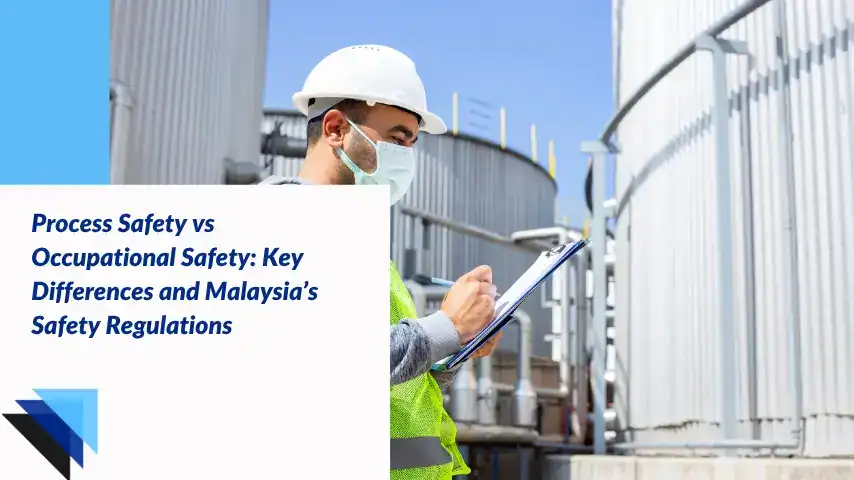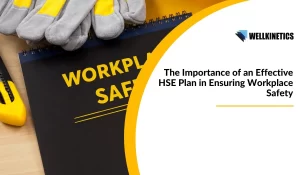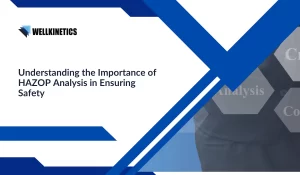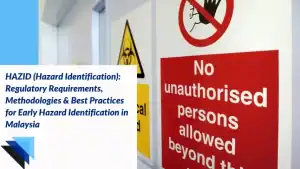Process safety and occupational safety are two distinct yet interconnected pillars of workplace safety in Malaysia. While process safety focuses on preventing catastrophic incidents in facilities handling hazardous materials, occupational safety addresses day-to-day workplace hazards affecting individual workers.
Understanding these differences is crucial for Malaysian organizations striving to maintain comprehensive safety standards. With recent amendments to Malaysia’s Occupational Safety and Health Act (OSHA) and stringent Process Safety Management (PSM) requirements, businesses must navigate an evolving regulatory landscape to ensure safety compliance.
Are you struggling to differentiate between these safety domains and ensure compliance with Malaysian regulations? This guide will unravel the key distinctions, regulatory requirements, and implementation strategies for both process and occupational safety.
Need a Comprehensive HSE Audit for Your Business?
Our thorough HSE audits identify specific risks in your operations, helping you pinpoint hazards and improve safety protocols effectively.
- What Is Process Safety and Why Is It Important?
- What Is Occupational Safety and Why Is It Important in the Workplace?
- What Is the Malaysian Safety Regulations Framework?
- What Is the Role of Risk Assessment in Workplace Safety in Malaysia?
- How Can Organizations Effectively Implement Safety Strategies in the Workplace?
- What Are the Key Differences Between Process and Occupational Safety?
- What Are the Industry-Specific Considerations for Process Safety and Occupational Safety?
- How Wellkinetics Can Help
What Is Process Safety and Why Is It Important?
Process safety encompasses a systematic approach to preventing catastrophic incidents in industrial facilities, particularly those handling hazardous materials. It focuses on maintaining the integrity of process systems and preventing major accidents that could harm people, property, and the environment.
What Are the Key Components of Process Safety in Industrial Facilities?
Process safety primarily revolves around managing risks in process plants and chemical plants. This includes comprehensive hazard identification, risk assessment, and implementing robust control measures to prevent major accidents and process hazards.
The scope extends beyond individual worker protection to safeguard entire facilities and surrounding communities. In chemical plants, this means carefully monitoring chemical reactions, pressure vessels, and storage systems to prevent process hazard scenarios like toxic releases, fire and explosion incidents.
A critical aspect involves maintaining multiple layers of protection throughout the process plant lifecycle. This includes:
- Engineering controls and safety systems
- Standard operating procedures
- Emergency response protocols
- Regular maintenance and inspection programs to prevent equipment failure
- Management of change procedures
Process safety demands a systematic evaluation of potential failure points that could lead to a process hazard. This involves analyzing equipment reliability, human factors, and process chemistry to identify where catastrophic events might originate.
The implementation requires active participation from all organizational levels, from operators to senior management. Regular audits, reviews, and updates ensure the effectiveness of safety measures in preventing major accidents.
RELATED: The Importance of Process Safety in Handling Hazardous Substances
What Is Occupational Safety and Why Is It Important in the Workplace?
Occupational safety forms the foundation of workplace well-being, focusing on protecting workers from immediate hazards and health risks in their daily work environment. It encompasses a systematic approach to identifying, evaluating, and controlling workplace conditions that could affect worker health and safety.
What Are the Core Elements of Occupational Safety in the Workplace?
Workplace safety begins with comprehensive hazard identification and risk assessment. This involves regular inspections to identify potential dangers that could harm workers, from physical hazards like machinery to environmental factors such as noise levels and air quality.
A robust occupational health program includes proper training and education for all employees. Workers must understand safety protocols, proper use of protective equipment, and emergency procedures to maintain a secure work environment and increase safety awareness.
Regular monitoring and evaluation of workplace conditions ensure that occupational safety measures remain effective. This includes tracking incident rates, conducting safety audits, and updating procedures based on findings and emerging risks.
Worker health surveillance plays a crucial role in occupational safety. Regular health checks and monitoring help identify early signs of work-related illnesses or injuries, allowing for prompt intervention and prevention of serious health issues.
What Is the Malaysian Safety Regulations Framework?
The Malaysian safety regulations framework is designed to ensure a safe and healthy work environment across various industries in the country. This framework encompasses a range of legislations, guidelines, and standards focused on promoting safety and health at work.
What Are the Compliance Requirements for Workplace Safety in Malaysia?
Malaysia maintains a robust framework of safety regulations that organizations must follow to ensure workplace safety and health. The Department of Occupational Safety and Health (DOSH) oversees the implementation of these safety protocols across various industries.
The primary legislation governing workplace safety is the Occupational Safety and Health Act 1994 (OSHA), which establishes fundamental safety obligations for employers and employees. This act requires organizations to conduct regular risk assessments, implement control measures, and maintain proper documentation of safety procedures.
Under the statutory workplace health requirements, organizations must:
- Appoint qualified safety and health officers
- Establish safety committees for workplaces with 40 or more employees
- Conduct regular safety training and awareness programs
- Maintain incident reporting and investigation procedures
- Implement emergency response plans
- Ensure proper maintenance of safety equipment
The safety regulation framework also mandates specific requirements for different industries. For instance, construction sites must comply with the Factories and Machinery Act 1967, while chemical processing facilities need to adhere to additional regulations concerning hazardous materials handling.
Struggling to Navigate Complex Safety Regulations?
Wellkinetics offers tailored solutions to help you understand and comply with both process and occupational safety standards, ensuring your business stays compliant with Malaysia’s evolving safety regulations.
What Is the Role of Risk Assessment in Workplace Safety in Malaysia?
Risk assessment forms the cornerstone of both process and occupational safety frameworks in Malaysia. Organizations must conduct thorough evaluations to identify potential hazards and implement effective control measures. This systematic approach helps minimize health risks and ensures workplace safety.
A comprehensive risk assessment involves analyzing workplace conditions, equipment safety, and handling procedures for hazardous materials. Companies must document these assessments and regularly update them to maintain their effectiveness and track safety performance indicators.
What Are the Key Elements of Emergency Response Protocols in Workplace Safety?
When dealing with identified risks, having robust emergency response protocols is crucial. These protocols outline specific actions to be taken during various emergency scenarios, ensuring quick and effective responses to potential incidents.
Organizations must establish clear communication channels and designate responsible personnel for emergency coordination. Regular drills and training sessions help employees familiarize themselves with these protocols, improving their readiness to handle critical situations.
The protocols should include detailed steps for:
- Immediate hazard containment
- Employee evacuation procedures
- Emergency services notification
- Medical response coordination
- Post-incident assessment and accident investigation
How Can Organizations Effectively Implement Safety Strategies in the Workplace?
Implementation strategies refer to the structured plans and actions an organization uses to effectively apply and uphold safety regulations, protocols, and best practices within the workplace. These strategies encompass a range of activities such as training initiatives, communication plans, resource allocation, and the establishment of safety committees. Through these strategies, organizations aim to integrate safety considerations into daily operations, ensuring that employees are well-informed, equipped, and prepared to uphold workplace safety standards.
What Are the Best Practices and Guidelines for Implementing Effective Safety Measures?
Implementing effective safety measures requires a strategic approach that combines both process and occupational safety considerations. A strong process safety culture forms the foundation of successful implementation, where every employee understands their role in maintaining safety standards.
Organizations should start by establishing clear safety policies and procedures that align with regulatory requirements. This includes developing comprehensive risk assessment protocols and regular safety audits to identify potential hazards before they escalate into incidents.
A company-wide training program is essential for ensuring all employees understand safety protocols and their responsibilities. This training should cover both theoretical knowledge and practical applications, with regular refresher courses to maintain awareness and competency.
Documentation plays a crucial role in implementation. Organizations must maintain detailed records of:
- Safety procedures and protocols
- Risk assessment findings
- Training records
- Incident reports and investigations
- Equipment maintenance schedules
- Emergency response plans
Continuous improvement should be embedded in the implementation strategy through regular reviews and updates of safety procedures. This involves analyzing incident data, gathering feedback from employees, and incorporating lessons learned into existing protocols.
Safety leadership is vital for successful implementation. Leaders must:
- Allocate adequate resources for safety initiatives
- Participate actively in safety programs
- Demonstrate visible commitment to safety practices
- Encourage open communication about safety concerns
- Recognize and reward safety-conscious behavior
How Often Should Process Safety Training Be Conducted for Employees?
Process safety training should be conducted at least annually, with additional sessions when new processes or equipment are introduced. Regular refresher courses are essential for maintaining a robust process safety culture. New employees must undergo comprehensive training before starting work in process plants.
Looking for Specialized Safety Training for Your Team?
We offer customized training sessions designed to equip your workforce with the knowledge and skills needed to handle daily tasks safely, all while complying with industry regulations.
What Are the Key Differences Between Process and Occupational Safety?
While both process and occupational safety aim to ensure a safe working environment, process safety is concerned with the prevention of large-scale incidents related to hazardous processes, whereas occupational safety focuses on protecting the health and safety of individual workers during their day-to-day activities. Understanding these distinctions is crucial for organizations seeking to develop a comprehensive safety management strategy that addresses all potential risks within the workplace.
What Is the Scope and Application of Process Safety and Occupational Safety?
Process safety and occupational safety represent the main types of safety measures crucial for maintaining workplace safety, yet they differ significantly in their scope and application.
Process safety focuses on preventing catastrophic incidents in facilities handling hazardous materials and complex operations. It encompasses the design, operation, and maintenance of process systems to prevent major accidents like explosions, fires, or toxic releases. The critical components of process safety management include detailed risk assessments, process hazard analysis, and comprehensive emergency response protocols.
On the other hand, occupational safety primarily deals with protecting individual workers from day-to-day workplace hazards. It addresses immediate workplace risks such as slips, falls, ergonomic issues, and personal protective equipment requirements. While process safety and occupational safety might seem similar, their fundamental approach to risk management differs considerably.
Process safety requires a systems-thinking approach, considering the entire facility’s operation and potential domino effects of failures. It involves complex calculations, detailed engineering controls, and sophisticated monitoring systems. The consequences of process safety failures can be catastrophic, affecting not just the workplace but potentially entire communities.
Occupational safety, however, focuses on individual worker protection through proper work procedures, training, and safety equipment. It deals with more immediate, visible risks that directly impact worker health and safety on a daily basis. The consequences, while serious, are typically limited to individual incidents rather than facility-wide catastrophes.
Can Small Businesses Benefit from Implementing Process Safety Management Systems?
Yes, small businesses can significantly benefit from process safety management systems. While initial implementation costs may seem high, PSM systems help prevent costly accidents, reduce insurance premiums, enhance operational efficiency, and demonstrate compliance with safety regulations.
What Are the Industry-Specific Considerations for Process Safety and Occupational Safety?
In addition to understanding the general distinctions between process and occupational safety, it’s important to recognize that specific industries may have unique safety challenges and requirements. Each sector, whether manufacturing, healthcare, construction, or chemical processing, has its own set of hazards and regulatory standards that influence safety management practices.
What Are the Common Challenges and Solutions in Process Safety and Occupational Safety Across Industries?
Different industries face unique safety challenges that require tailored approaches. The American Institute of Chemical Engineers emphasizes that manufacturing facilities, particularly those handling hazardous materials, must address specific process safety concerns while maintaining occupational safety standards.
For instance, chemical processing plants implement comprehensive safety protocols that address both process and occupational risks. These facilities often struggle with managing reactive chemical processes while ensuring worker protection during routine operations.
Common industry-specific challenges include:
- Balancing production efficiency with safety measures
- Managing contractor safety in high-risk environments
- Implementing effective emergency response procedures
- Maintaining consistent safety standards across multiple sites
Examples of areas of safety management that require special attention vary by sector:
- Chemical Industry: Focus on containment systems and hazardous material handling
- Construction: Emphasis on fall protection and equipment safety
- Manufacturing: Priority on machine guarding and ergonomic considerations
- Oil and Gas: Concentration on pressure vessel integrity and explosion prevention
Successful solutions often involve:
- Regular safety audits tailored to industry-specific risks
- Specialized training programs for different operational areas
- Implementation of industry-specific safety management systems
- Collaboration with safety experts for targeted improvements
How Wellkinetics Can Help
At Wellkinetics, we understand that navigating the complexities of safety management can be daunting for organizations, especially when balancing the critical elements of both process and occupational safety. Our expert team is dedicated to providing tailored solutions that address the unique challenges faced by your industry while fostering a culture of safety within your organization.
1. Comprehensive Safety Audits: We offer thorough safety inspections designed to identify specific risks within your operational environment. By pinpointing potential hazards and assessing existing safety protocols, we provide actionable insights that help elevate your safety standards.
2. Specialized Training Programs: Our customized training sessions are crafted to meet the needs of your workforce, focusing on essential safety practices that align with industry regulations. We emphasize hands-on learning to ensure that employees are well-prepared to handle daily tasks safely and effectively.
3. Implementation of Safety Management Systems: We assist organizations in developing and implementing robust safety management systems that integrate both process and occupational safety measures. Our systems are designed for scalability, enabling seamless operation across multiple sites while ensuring compliance with sector-specific regulations.
4. Emergency Response Planning: We work with you to create effective emergency response plans that address common industry-specific risks. Our approach includes regular drills and simulations to ensure your team is equipped to respond promptly and effectively in case of an emergency.
5. Continuous Improvement Framework: At Wellkinetics, we believe that safety is an ongoing journey. We support organizations in establishing a continuous improvement framework that allows for ongoing evaluation and enhancement of safety practices. This framework helps to cultivate a proactive safety culture, encouraging employees to actively participate in identifying hazards and proposing solutions.
6. Expert Consultation Services: Our team of safety experts is available for consultation to analyze your current safety protocols and recommend improvements. We stay informed on the latest trends in safety regulations and best practices, ensuring your organization remains compliant and at the forefront of industry standards.
7. Collaboration and Partnership: We believe that successful safety management involves collaboration. We work closely with your team to foster open communication channels, share knowledge, and encourage a team-oriented approach to safety. Together, we can create tailored strategies that not only meet compliance standards but also prioritize the well-being of your workforce.
8. Access to Resources and Tools: We provide access to a variety of resources, including safety management software, risk assessment tools, and educational materials to support ongoing learning. This empowers your organization to maintain high safety standards even amid changing regulations and operational shifts.
Learn more about our Process Safety Consulting and HSE Consulting Services.




